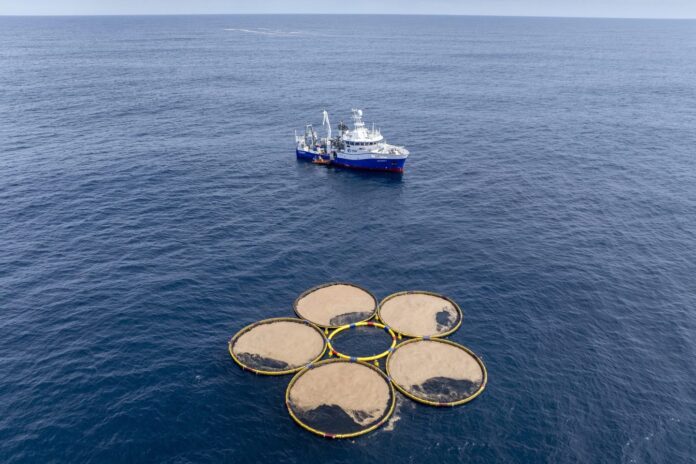A three‑year‑old Israeli startup, Gigablue, announced it sold 200,000 ocean carbon credits to SkiesFifty, an aviation partner, for a process that deploys particles into the ocean to trap carbon. The deal marks the largest ocean‑based carbon removal agreement to date apnews.com and signals growing interest in marine carbon credits even as experts question the method’s validity and safety.
What Gigablue Claims and How It Works
Gigablue says its patented particles carry nutrients that spur algae growth. The algae then sink with the particles, locking carbon on the sea floor for long periods. The company reports sinking rates of up to 100 meters per hour and claims the process requires only sunlight, water, and low‑cost materials like vermiculite and plant waxes apnews.com. Gigablue points to a review by New Zealand’s National Institute of Water and Atmospheric Research as proof that its approach meets scientific standards.
Criticism from Marine Scientists
Oceanographers have voiced deep doubts about the technology. Thomas Kiørboe of the Technical University of Denmark said most plankton do not attach to surfaces or colonize particles, making the idea “absurd” to many ecologists apnews.com. Philip Boyd of the University of Tasmania added that strong sinking could shear algae off the particles and that no peer‑reviewed data shows increased carbon uptake in the atmosphere. He called for transparent trials and open data before trusting claims of large‑scale carbon removal apnews.com.
Iron Fertilization Comparisons
Critics liken Gigablue’s method to iron fertilization, a once‑popular but now banned practice that dumped iron into oceans to boost plankton growth. James Kerry of OceanCare argued the startup’s particles function like iron, making its credits just another form of untested fertilization apnews.com. While Gigablue rejects that link, it has yet to fully disclose its particle composition, citing trade secrets.
The Rapidly Growing Marine Carbon Credit Market
Sales of ocean carbon credits jumped from about 2,000 units four years ago to over 340,000 last year, according to CDR.fyi apnews.com. Buyers like SkiesFifty see credits as a way to meet aviation decarbonization goals amid sustainable fuel shortages. But experts warn that weak oversight and unproven science risk undermining real climate progress and could cause harm to ocean ecosystems.
Regulatory and Industry Context
Unlike forestry credits or direct air capture, marine credits face limited regulation. International treaties ban commercial iron fertilization and call for strict review of ocean interventions. Gigablue’s deal skirted most of these rules, as no global body currently enforces rigorous testing or verification for marine credits. Observers say this gap lets startups sell offsets before proving their tech works or safeguarding marine life.
Personal Analysis
I see this deal as a cautionary tale in the carbon market. On one hand, aviation companies and startups need solutions fast. But selling ocean carbon credits based on unverified methods risks turning genuine climate action into a marketing game. If particles fail to trap carbon or if they disrupt marine food webs, we could end up harming the very systems we depend on. Until rigorous, peer‑reviewed studies back these claims, buyers should demand full transparency and proof of long‑term carbon storage. Otherwise, we may trade real progress for empty promises.


